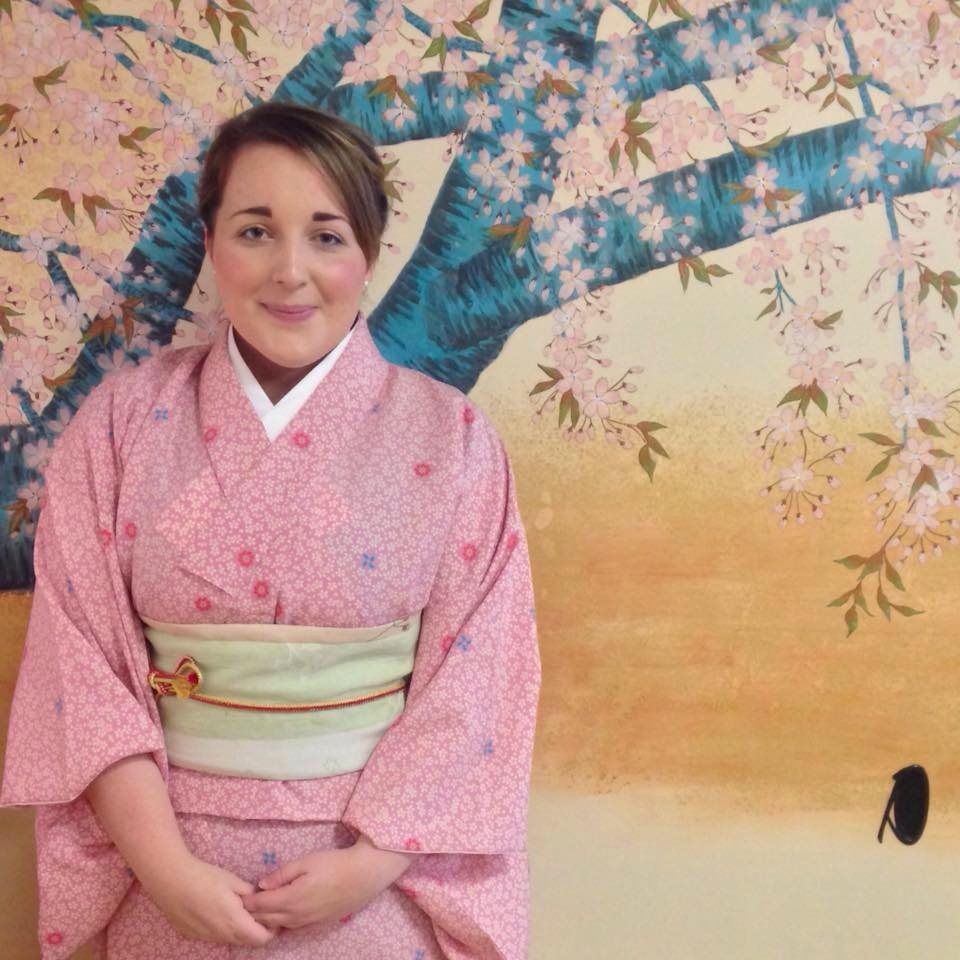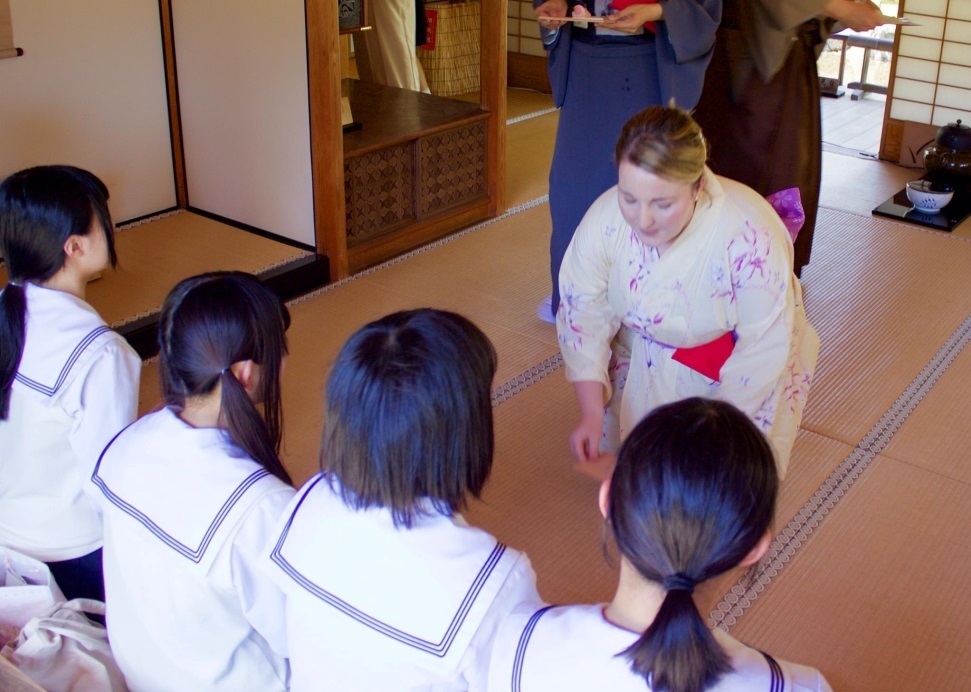Culture & Education
2016/9/14
The Japan Exchange and Teaching (JET) Programme
Irish JET Report


“Where everybody knows your name, and they’re always glad you came” - Harriet Sheridan (ALT, Fukui Prefecture, 2013-2016)
After an 8-hour bus ride from Tokyo, I arrived in the strikingly picturesque prefecture of Fukui on July 31st, 2013. It was 37 degrees, 99% humidity, and my hair was not cooperating. From that moment on, everything changed; new language, new culture, new apartment, new job, new friends, and even a new name. Seemingly overnight, I became Harry-Sensei. Over the next three years, I tried my best to sample all that Fukui and Japan had to offer. I learnt how to play the shamisen (Japanese banjo) from a former geisha, I cheered on sumo wrestlers at the Grand Tournament in Osaka, and I made my TV debut after chatting to an NHK reporter about my love of Japanese tea ceremony. I witnessed the sun rise over Mount Fuji, and I joined thousands of Japanese people (& Paul McCartney) in singing “Hey Jude” in the Tokyo Dome. In winter, I sat under my kotatsu (heated table, and possibly the greatest invention ever), skyping friends and family back home, while gazing out at the snow-capped mountains that surrounded Fukui City. In spring, on my way home from work, I rode my bicycle through illuminated tunnels of cherry blossoms and pretended I was in a Ghibli movie.
Teaching at a high school with over 850 students was, without a doubt, the highlight of my JET experience. When I first arrived, I was eager to make a good impression. Luckily, One Direction was the band-du-jour with my students, and yes, I admit to frequently name-dropping my compatriot Niall Horan in a bid to impress them. I taught them everything from formal debating to writing 5-paragraph essays about the Syrian refugee crisis, and making skits about love triangles. My days were lively, varied and challenging. I helped prepare students for studying abroad, coached them for national speech contests, and prepped them for English proficiency tests. Their inquisitiveness, enthusiasm, and kindness never failed to make me smile. One day, I happened to mention that my favourite Japanese character was a cute brown bear, named Rilakkuma. The word spread, and over the next few months, thank you gifts would mysteriously appear on my desk, a desk that currently looks like some sort of bear shrine. The students' sense of school pride has always been contagious, and this is something that I quickly adopted. We recently found out that a new film, starring actress Suzu Hirose, is going to be made based on our school’s cheer dance team (coincidently, named JETS). Staff, students and the local community are overjoyed, and I’m already practising, in the event that they ask me to make a cameo appearance.
After a rather confusing conversation about volcanos with my school principal when I first arrived, I realised there was some major confusion about whether I was actually from Ireland or Iceland. I decided to make it my mission to share everything I could about my homeland with the people of Fukui. Never did I expect that my teenage years spent at the Gaeltacht would come back to help/haunt me. I taught people of all ages how to dance The Walls of Limerick, pick up a hurley and flake a sliotar, and, of course, converse with a cúpla focail. Japanese people’s curiosity about foreign cultures and their pride in sharing their own made these opportunities both rewarding and memorable. I may have moved over 9,000 kilometres across the world, but I’ve never felt more patriotic. Even though there have been times when I’ve certainly missed home, feeling like a member of the community has been one of the main reasons why I’ve stayed three years in Japan. In fact, I was recently cajoled by one my elderly neighbours into joining a monthly wagashi (Japanese sweet) class, run by the most charming group of Japanese ladies. I immediately realised that I was not only the sole English speaker, but I was also the youngest member by about 40 years. Regardless, they welcomed me with open arms, and I became, in their words, an honorary obaasan (grandmother).
My time in Japan is rapidly drawing to a close. I’ve started writing my sayonara speeches, posting my vast assortment of tea ceremony utensils back home, and I’m getting emotionally ready to toast my last kanpai. However, the good news is that some of my Japanese friends are planning to visit me in Ireland next year, and I recently received an email from a former student, telling me that she’s hoping to study in Cork as part of her degree programme. It might sound a little corny to say that the JET programme has changed my life, but it has. I’ve now got a new career direction in front of me, a newfound sense of self-confidence, friends spread all over the world, a lifetime of stories to recount, memory cards full of photographs to show off, and a home away from home, one that I know will always be there to welcome me back. I am still Harriet from Ireland, but a part of me will forever be Harry-Sensei from Fukui.
After an 8-hour bus ride from Tokyo, I arrived in the strikingly picturesque prefecture of Fukui on July 31st, 2013. It was 37 degrees, 99% humidity, and my hair was not cooperating. From that moment on, everything changed; new language, new culture, new apartment, new job, new friends, and even a new name. Seemingly overnight, I became Harry-Sensei. Over the next three years, I tried my best to sample all that Fukui and Japan had to offer. I learnt how to play the shamisen (Japanese banjo) from a former geisha, I cheered on sumo wrestlers at the Grand Tournament in Osaka, and I made my TV debut after chatting to an NHK reporter about my love of Japanese tea ceremony. I witnessed the sun rise over Mount Fuji, and I joined thousands of Japanese people (& Paul McCartney) in singing “Hey Jude” in the Tokyo Dome. In winter, I sat under my kotatsu (heated table, and possibly the greatest invention ever), skyping friends and family back home, while gazing out at the snow-capped mountains that surrounded Fukui City. In spring, on my way home from work, I rode my bicycle through illuminated tunnels of cherry blossoms and pretended I was in a Ghibli movie.
Teaching at a high school with over 850 students was, without a doubt, the highlight of my JET experience. When I first arrived, I was eager to make a good impression. Luckily, One Direction was the band-du-jour with my students, and yes, I admit to frequently name-dropping my compatriot Niall Horan in a bid to impress them. I taught them everything from formal debating to writing 5-paragraph essays about the Syrian refugee crisis, and making skits about love triangles. My days were lively, varied and challenging. I helped prepare students for studying abroad, coached them for national speech contests, and prepped them for English proficiency tests. Their inquisitiveness, enthusiasm, and kindness never failed to make me smile. One day, I happened to mention that my favourite Japanese character was a cute brown bear, named Rilakkuma. The word spread, and over the next few months, thank you gifts would mysteriously appear on my desk, a desk that currently looks like some sort of bear shrine. The students' sense of school pride has always been contagious, and this is something that I quickly adopted. We recently found out that a new film, starring actress Suzu Hirose, is going to be made based on our school’s cheer dance team (coincidently, named JETS). Staff, students and the local community are overjoyed, and I’m already practising, in the event that they ask me to make a cameo appearance.
After a rather confusing conversation about volcanos with my school principal when I first arrived, I realised there was some major confusion about whether I was actually from Ireland or Iceland. I decided to make it my mission to share everything I could about my homeland with the people of Fukui. Never did I expect that my teenage years spent at the Gaeltacht would come back to help/haunt me. I taught people of all ages how to dance The Walls of Limerick, pick up a hurley and flake a sliotar, and, of course, converse with a cúpla focail. Japanese people’s curiosity about foreign cultures and their pride in sharing their own made these opportunities both rewarding and memorable. I may have moved over 9,000 kilometres across the world, but I’ve never felt more patriotic. Even though there have been times when I’ve certainly missed home, feeling like a member of the community has been one of the main reasons why I’ve stayed three years in Japan. In fact, I was recently cajoled by one my elderly neighbours into joining a monthly wagashi (Japanese sweet) class, run by the most charming group of Japanese ladies. I immediately realised that I was not only the sole English speaker, but I was also the youngest member by about 40 years. Regardless, they welcomed me with open arms, and I became, in their words, an honorary obaasan (grandmother).
My time in Japan is rapidly drawing to a close. I’ve started writing my sayonara speeches, posting my vast assortment of tea ceremony utensils back home, and I’m getting emotionally ready to toast my last kanpai. However, the good news is that some of my Japanese friends are planning to visit me in Ireland next year, and I recently received an email from a former student, telling me that she’s hoping to study in Cork as part of her degree programme. It might sound a little corny to say that the JET programme has changed my life, but it has. I’ve now got a new career direction in front of me, a newfound sense of self-confidence, friends spread all over the world, a lifetime of stories to recount, memory cards full of photographs to show off, and a home away from home, one that I know will always be there to welcome me back. I am still Harriet from Ireland, but a part of me will forever be Harry-Sensei from Fukui.
